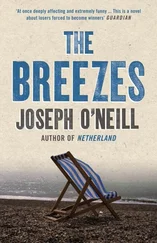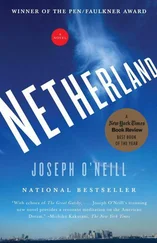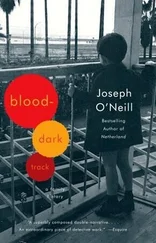Ollie said, ‘OK. Let’s get on the boat.’
I haven’t fully recovered from this freak-out, which one might more precisely describe as a traumatic episode of extra- or supramural apprehension. A few months ago, I had reason to spend a discounted but still very expensive night in the Neptune Suite of the Atlantis Palm. The special feature of the Neptune Suite (aside from the two complimentary Dolphin Encounters with dolphins supposedly flown in from the Solomon Islands) is the huge blue water-window that gives on to the Atlantis’s famous Lost Chambers aquarium and promises the experience of ‘exploring the mysterious ruins of Atlantis’. My companion asked if the curtains might be left open overnight. Sure, I said. I got into bed and switched off the lights. The incandescence of the aquarium flooded the room, which now was subsumed by the thalassic realm and, so it felt to me, teemed with silent pelagic beings. ‘This so cool,’ my companion said. I smiled at her and hid my face under the bedclothes. Eventually I peeked out and, in the hope of overcoming my terror, forced myself to watch the approach of eels, sharks and other fishes. A small ray scooted up the window with its white underside against the glass — charming little spook, from one point of view, monster of otherness from another. I was in the latter camp. For hours I lay in an insomniacal agony of submersion that ended only when a pair of frogmen, each in a cloud of fish, swam towards us and began to wipe the glass.
The speedboat operator gave us tea. ‘I say we head back,’ Ollie said. ‘This isn’t working out.’
Dibba was hot, hot, hot. It was July, easily over forty degrees Celsius. Waiting around for the other divers was not an option. Later we heard that Trevor Winters, who was far from being a bad guy and not long afterwards was himself the subject of one of those Dubai evaporations, thanked everyone for their efforts and distributed commemorative T-shirts bearing the words TED WILSON POSSE.
By the time I got back to The Situation, I was wiped out. I took a cold (i.e., lukewarm) shower, dressed to my underclothes, and watched a jet skier fooling around in the lagoon. Then I climbed into my Pasha Royale X400™ massage chair and programmed a twenty-minute Full Body Integrated Shiatsu Massage, Intense mode. I selected Ambient Classics (the Pasha has built-in speakers) and pressed Start Bodywork. The chair and I began to tremble.
The Pasha remains my go-to comforter. I’m not sure how I would cope without it. Arguably this reveals something inadequate about me, but what is a private dwelling if not a redoubt against the tyranny of adequacy? And what’s wrong with having a favourite chair? What difference does it make if its components include motors and rollers and air bags? Are these to be distinguished, analytically, from casters and springs and cushions? So what if one’s chair produces physically pleasant vibrations and frictions? Or is an uncomfortable chair better than a comfortable one? Bottom line: the Pasha hurts nobody. It’s not as if it’s stuffed with minuscule underlings coerced into massaging me.
About nine minutes and fifteen seconds into a twenty-minute Full Body Shiatsu, the Pasha’s heavy-duty twin rollers — Cagney and Lacey, I call them — get serious and rumble up the S-track and start the ‘Deep Tissue Knead’ action on the muscles that surround my upper spine. Here, I invariably open my eyes and look out the windows. It is soothing to look out the windows in combination with a Pasha massage, especially if there’s an active construction site in view. I have become an aficionado of this species of vista. Admittedly, this has a compulsory aspect: I have yet to live in a Dubai apartment that does not give on to a scene of buildings being built. There has never been a time, in fact, when the stupendous and beautiful Burj Dubai/Khalifa itself has not been in sight from one window or another. The slow theatre of its years-long rising, its growing little by little taller and more slender until finally it achieved its last sheen and height, so that a person in almost any populated part of the emirate now has the option of looking up and contemplating nothing less than a wonder of the world — this excitement has been and continues to be a must-see part of the Dubai experience, a great theme of which has been the turning inside-out of the optical fictions for which the desert sands have been notorious from the earliest ages. I still think about the afternoon when, at a spot not far from the wilds allocated to now moribund Dubailand, I stopped the Autobiography and got out into the heat and wind to take in, without the mediation of the windshield, Dubai’s little row of towers, visible as if adrift, miles away across the level desert. The city could not have more resembled a fata morgana — and that was the whole idea. If I might psychologize, the reliance on the mirage/wonder equation, which of course has an etymological basis, is not just a marketing ploy: it is a secret revenge on the mirage itself, and only one facet of the Dubaian counterattack on the natural. The crimes of nature against man, in this part of the world, are not restricted to the immemorial mockery of the visual sense. The slightest effort of reflection must yield an awareness of the suffering and lowliness that these barren and desolate sands have without cease inflicted on their human inhabitants; and it cannot be a surprise, now that the shoe is on the other foot, that the transformation of this place is characterized by attempts at domination directed not only against the heat and dust but, as is evident from the natives’ somewhat irrational hostility to solar energy and their unusual dedication to the artificial settlement of marine areas, against the very sun and the very sea. This is what happens when you fuck with people for a long time. They fuck with you back.
There are some who would raise an eyebrow at my favourable aesthetic assessment of the Burj. I’d invite them to come here and see the unprecedented perpendicular for themselves, but first of all to put away ideas formed in advance about this country, the brand of which, it’s fair to say, places unusual reliance on the Guinness Book of World Records and in particular the sections of that book for children that are concerned with the breaking of records having to do with immensities. Unless I’m mistaken, in addition to the world’s tallest artificial structure, our many Officially Amazing feats/features include the longest driverless metro, the tallest hotel, the largest gold ring, the most floors in a building, the building with the largest floor space, the biggest mall, and, I read somewhere, the most nationalities washing their hands at once. Even this last exploit (undertaken to mark Global Handwashing Day, and not, as the pre-judger might think, a mindless stunt) suggests to me that there remains intact in this small country a joyful, properly childlike sense of the lofty. Excelsior!
The construction process is interesting and sometimes gorgeous. I can’t pretend to understand what I’m looking at, but nor can I deny the spectacular pleasure I get from tall rebars standing in thickets in concrete, or from the short-lived orange plastic mesh that is like orange peel, or from the patterns made by construction lanterns shining in exposed concrete interiors. Most compelling of all are the tower cranes. The Dubai skyline is unimaginable to me without their masts and jibs and guy lines. Each of these marvels would impress Eiffel himself and stirs one as much as any spire or minaret. If I had my way, they would remain permanently in place, in great numbers. A Dubai that is not under continuing construction would make less sense. I’m pretty sure that nobody is looking forward to the day when everything has been built and all that remains is the business of being in the buildings.
Читать дальше
Конец ознакомительного отрывка
Купить книгу












